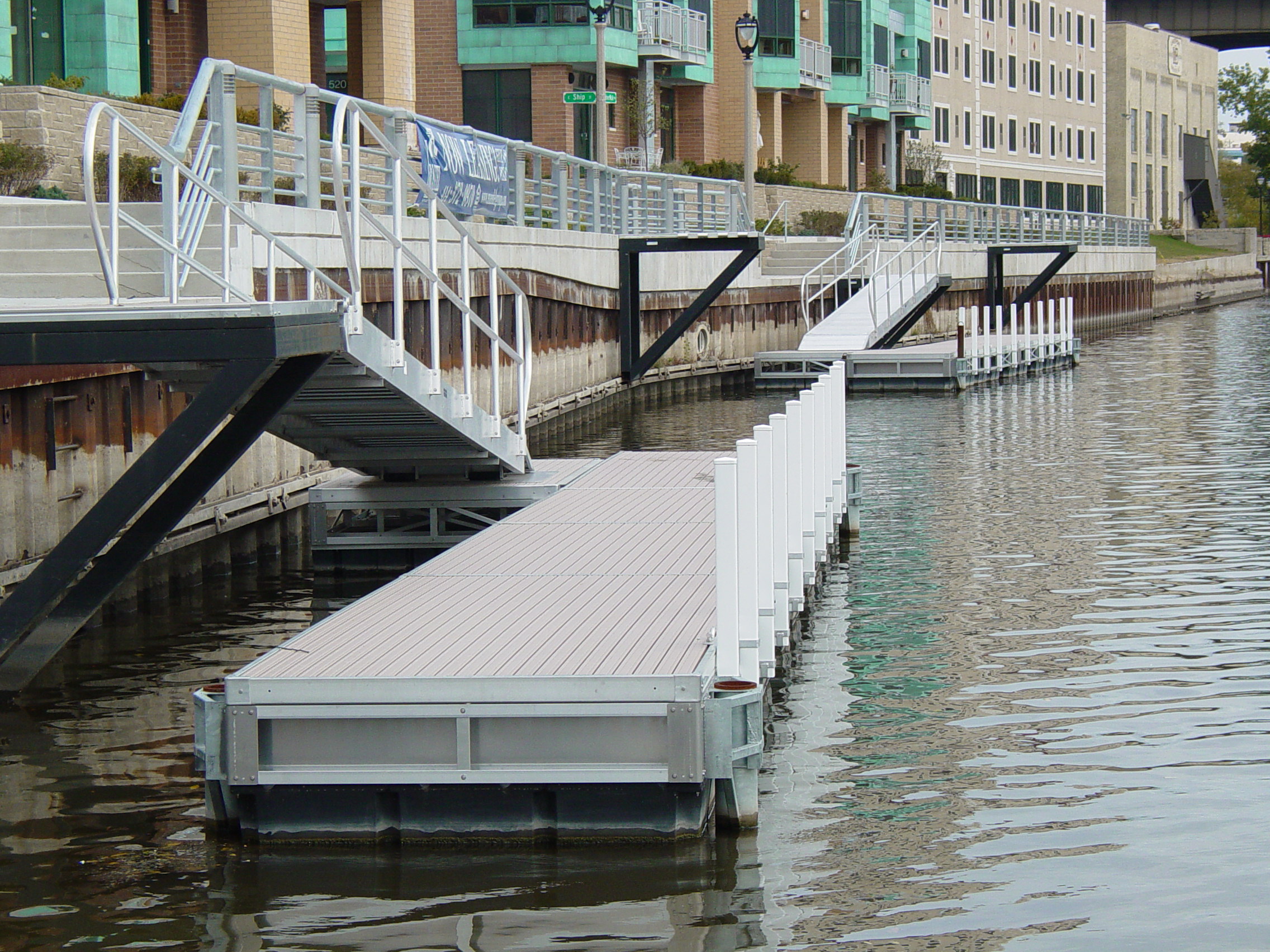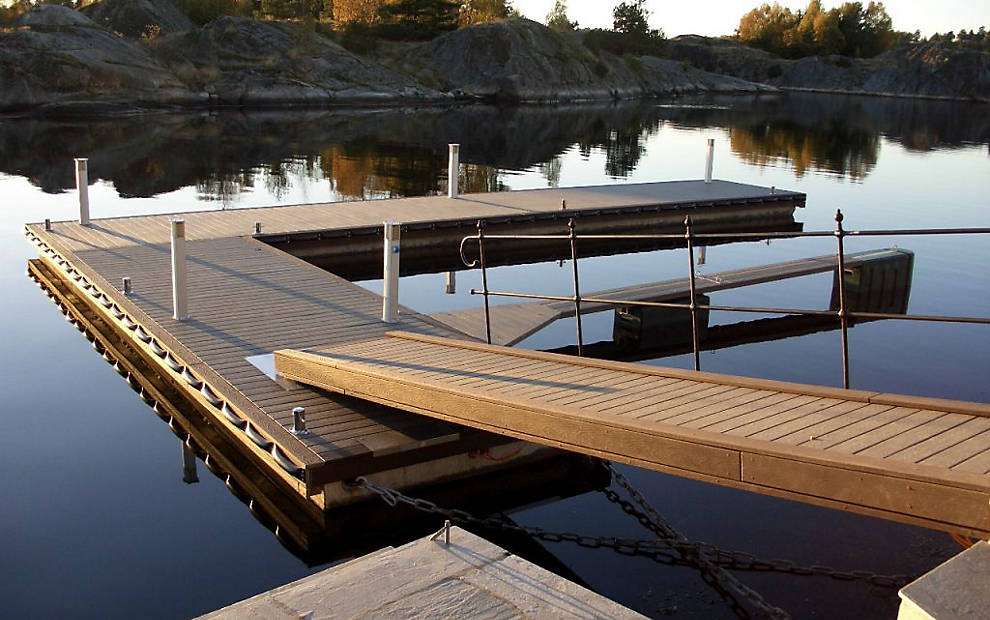Upgrade Your Beachfront With Resilient Floating Docks
Updating your beachfront with durable floating docks can considerably improve both capability and aesthetics, providing a flexible solution for numerous water tasks. These frameworks are created to adapt to ever-changing water degrees, guaranteeing security and accessibility throughout the seasons. With a series of products offered, including low-maintenance choices and traditional timber, selecting the appropriate dock can match your personal design and meet sensible requirements. Nevertheless, comprehending the nuances of setup and maintenance is essential for ensuring durability and efficiency. When making this financial investment?, what elements should you consider.
Advantages of Floating Docks
Floating docks offer a plethora of benefits that enhance their appeal for numerous maritime applications. One of the main benefits is their adaptability to transforming water degrees - dock company. Unlike conventional set docks, floating docks rise and autumn with the trend, making sure regular availability for watercrafts and watercraft despite ecological conditions. This function dramatically minimizes the risk of damage to vessels, as they continue to be firmly moored even during fluctuations in water depth.
Furthermore, floating docks are less complicated to transfer and mount, giving versatility for seasonal or momentary usage. Their modular layout enables modification to fit specific demands, whether for personal marinas, household waterfronts, or industrial applications.
Additionally, floating docks develop minimal disturbance to the water environment, maintaining regional ecosystems and minimizing the possibility of disintegration. They additionally supply improved safety and security for individuals, as their buoyant nature offers a more flexible surface than rigid frameworks.
Moreover, floating docks can facilitate a diverse variety of tasks, such as fishing, swimming, and entertainment boating, making them a useful asset for waterside development. Their convenience and usefulness make floating docks a favored option for a variety of marine projects.
Selecting the Right Materials
Selecting appropriate materials for floating docks is crucial to their long life, performance, and total effectiveness. When choosing materials, take into consideration aspects such as environmental direct exposure, upkeep demands, and structural integrity. Common products consist of wood, plastic, aluminum, and composite choices, each offering distinct advantages and disadvantages.
Wood, while visually pleasing, calls for routine maintenance to prevent rot and degeneration. Pressure-treated timber can improve durability, but it may still surrender to water damage gradually. Plastic floats, typically made from high-density polyethylene, are resistant to corrosion and need very little upkeep, making them an attractive selection for low-maintenance applications.
Aluminum is an additional feasible choice, recognized for its toughness and lightweight residential or commercial properties. It is immune to corrosion and can hold up against extreme weather, although it might be a lot more costly than various other materials. Compound materials integrate the best features of wood and plastic, using a low-maintenance and resistant option that resembles the appearance Read More Here of wood without the connected downsides.
Ultimately, the option of material must straighten with the intended use, environmental factors to consider, and budget restraints, making certain a functional and durable floating dock that satisfies your certain demands.
Setup Process Review
The successful installment of a floating dock depends on mindful planning and implementation, making sure that it runs successfully in its desired atmosphere. The initial step involves examining site problems, consisting of water deepness, coastline functions, and prevailing weather patterns, which will certainly notify the dock style and anchoring system.
Adhering to the site analysis, the following phase is to prepare the floating dock parts. This consists of setting up the framework, protecting drifts, and attaching any required hardware. It is vital to make certain that all connections are waterproof and durable to stand up to aquatic conditions.
When the dock is constructed, the setup procedure investigate this site begins with positioning the dock in the water. This can include a crane or other lifting tools, especially for bigger structures. Appropriate placement is necessary for performance and safety.

Maintenance Tips for Long Life
Regular upkeep is important for guaranteeing the durability and optimal efficiency of a floating dock. To achieve this, start with regular examinations a minimum of two times a year, concentrating on the stability of the dock's structure, consisting of the flotation tools and attaching equipment. Look for indications of deterioration, wear, or damages, and resolve any kind of issues immediately to stop additional damage.
Cleaning is one more important facet of maintenance. Eliminate particles, algae, and barnacles from the dock's surface area to avoid unsafe problems and maintain aesthetic charm. Utilize a soft brush and a moderate cleaning agent to avoid damaging the dock's products.
Additionally, ensure that the dock is correctly secured and safeguarded to withstand seasonal adjustments in water degrees and weather. Inspect the anchoring system for stability and make changes as needed.
Enhancing Your Outside Aesthetic
To develop an aesthetically enticing outside room, incorporating a floating dock can considerably improve the general aesthetic of your beachfront building. Floating docks are not just practical but can also offer as a striking centerpiece that enhances the all-natural environments - floating dock builder. Offered in various materials and styles, these docks can be tailored to match your property's building style and landscape
The addition of decorative aspects, such as incorporated lights or elegant barriers, further boosts the dock's aesthetic charm. Take into consideration using natural wood coatings, which blend effortlessly with the setting, or selecting modern-day materials like aluminum or composite outdoor decking that supply a sleek, contemporary appearance.
Strategically placing planters or seating locations on or around the dock can produce welcoming areas that motivate relaxation and satisfaction of beachfront sights. Furthermore, incorporating colors and appearances that harmonize with your landscape will certainly develop a cohesive visual throughout your outdoor area.

Verdict

Updating your beachfront with durable floating docks can substantially boost both performance and appearances, weblink offering a functional option for different water tasks. Unlike traditional set docks, floating docks surge and autumn with the trend, guaranteeing regular availability for watercrafts and boat regardless of environmental problems.Picking appropriate materials for floating docks is crucial to their long life, efficiency, and overall efficiency.Once the dock is set up, the installment process starts with positioning the dock in the water.In summary, floating docks offer countless advantages, including versatility to water degree adjustments and a variety of product alternatives.